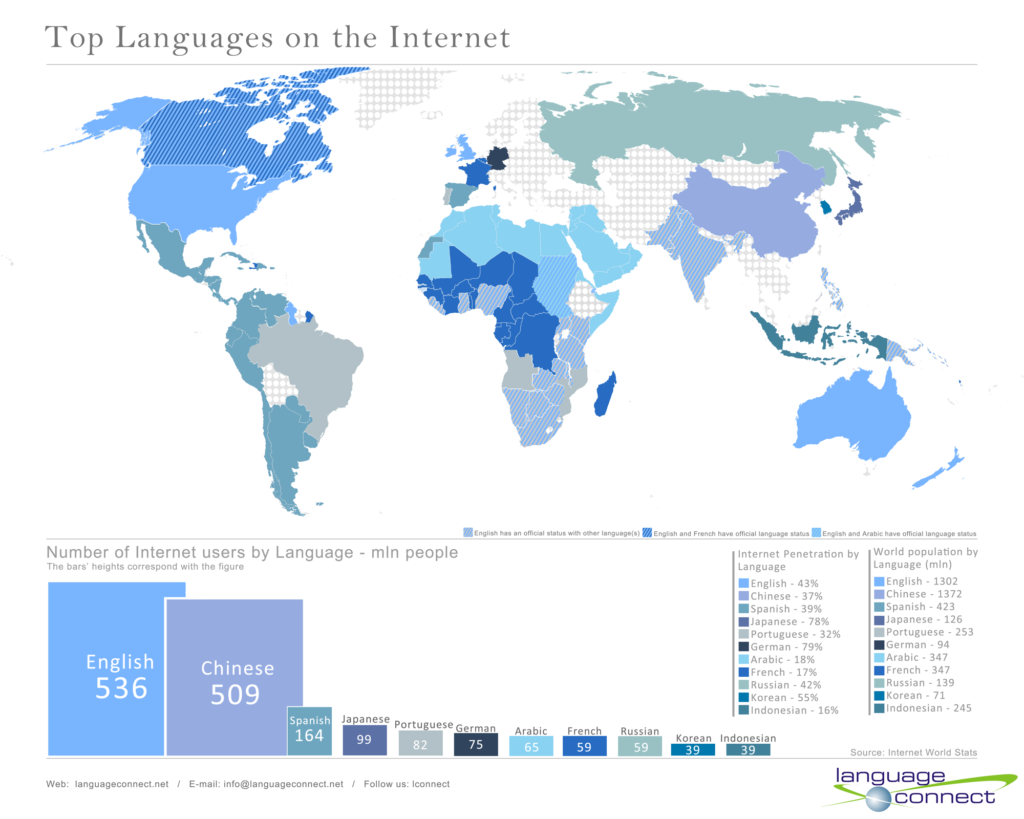As the number of web users grows around the world, languages on the internet have continued to expand resulting in an increasingly multilingual internet. The Internet used to be English centric and even today; English remains the dominant language, but the remarkable growth of languages such as Chinese has changed the online language landscape.
Continuing on from a previous post on the Top 10 languages on the internet, which listed the growth of various languages on the web, I thought of revisiting the topic and look at the changes that have occurred since then through an infographic.

The image shows the top languages on the web. Also, included are tables on internet penetration by language and the world population by language. The source of the data are from Internet World Stats (click the picture to enlarge).
English remains the top language, but Chinese has grown significantly and will overtake English sooner than predicted. The impressive growth of Chinese-speaking web users is a result of the economic progress and improvements in telecommunications infrastructure within the Asian giant. European languages feature prominently but the emergence of Asian languages is noticeable, and they are expected to overtake their European counterparts in the coming years due to their higher population of speakers.
As the internet reflects local norms and culture, the use of local languages by web users is part of the natural evolution of the internet. The web is getting better at supporting different languages, particularly those not written using Latin script such as Russian, Chinese and Arabic. Unicode, a standard for supporting nearly all the world’s writing systems, is now widespread across the Internet. Furthermore internationalised top-level domains have now been introduced for countries such as Russia (.рф) where it has proved extremely popular. Different languages will continue to gain prominence on the web as localized content is preferred by web users. This is a good reason why websites should be available in different languages.
Compared to figures from 2008, languages like English, Chinese, Spanish and Portuguese have grown considerably. While other languages like Arabic have seen more modest growth, internet penetration rates tend to be very low indicating the potential for much greater growth in the future. Though English will be overtaken by Chinese in the next few years by number of users, it will retain its position as the dominant language because of its global use for communication. What is certain however is that the Internet is now a truly multilingual environment, and the most significant future growth will be in countries where internet penetration is much lower than in the English-speaking world.
This is a guest post by Talha Fazlani. Talha is an online marketing executive for Language Connect, a language services and internet marketing company based in London, Munich and Melbourne. He is also a regular contributor to their company blog, The Global Connect.
Read more:
How hard is Chinese?
My English is not your English
Languages of the world and where they come from




